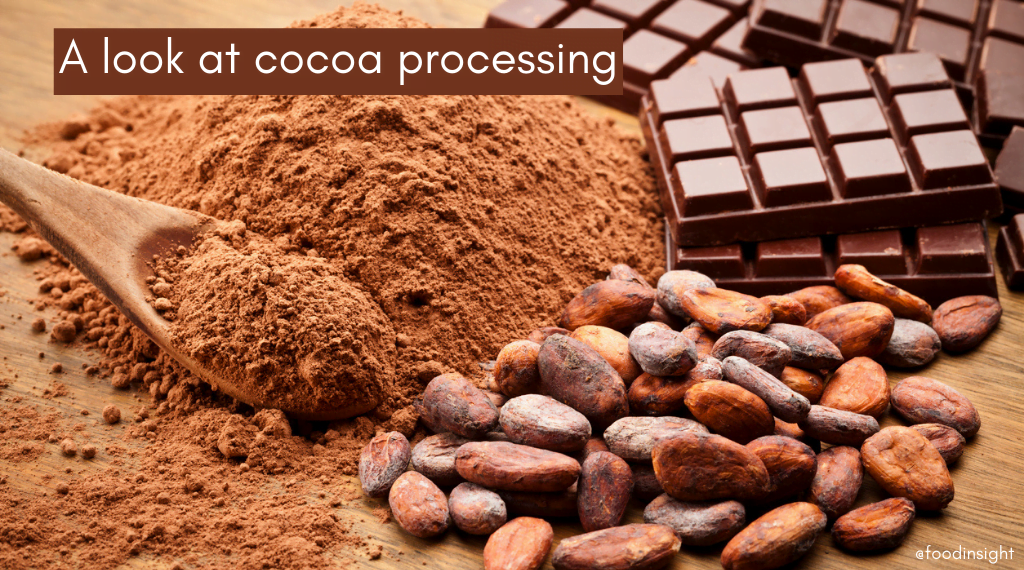Chocolate can be enjoyed in many ways—as a treat, as part of a snack or as a flavoring for beverages— and has been for many years. In fact, cocoa foods and beverages made from beans from the Theobroma cacao tree have been consumed by humans as early as 460 CE, and for years cocoa consumption has been associated with positive health benefits, such as anti-inflammatory properties.
Cocoa is a functional food, is an antioxidant and is naturally rich in flavonoids. However, before you scarf down all the chocolate you can get your hands on, note that the caveat of consuming chocolate for its health benefits is the requirement that the cocoa contains an effective dose of active health-benefitting components and a reduced amount of sugar.
Many chocolate lovers may want to know a bit more about how our indulgent friend starts from a tree and ends up in nicely wrapped foil packaging or a chocolate milk carton.
Cocoa farmers at work
Cocoa largely originates from three global regions—Southeast Asia, Latin America and West Africa. There are over 5 million cocoa farmers who rely on the cocoa bean for their livelihoods, and 70% of the world’s cocoa beans (about 2.6 million tons of cocoa produced annually) come from four West African countries: the Ivory Coast, Ghana, Nigeria and Cameroon. The Ivory Coast and Ghana are the two largest producers of cocoa (they source more than half the world´s cocoa). Over 3.5 million tons of cocoa beans are used annually around the globe to manufacture many food and beverage products. Cocoa farmers use sustainable farming practices that not only help conserve natural resources, but also help ensure the livelihoods of the people that work in the farming supply chains and the related surrounding communities where cocoa is grown.
Farming cocoa still often meets many challenges, including resource availability for farmers—field hand numbers (many farmers depend on family members, including children, to help with harvests), pesticide use and availability (pests can contribute to farmers losing anywhere from 30 percent to nearly their entire cocoa crop annually) and natural resources (including water, soil and climate fluctuations; cocoa trees are significantly sensitive to changing weather patterns). Regarding pests, many researchers are working on disease-resistance amplification in cocoa trees to help farmers. These genetic selection exercises could save farmers from great losses.
From cacao to cocoa; from bean to bar
Cocoa production begins with harvested Theobroma cacao fruit seeds being dried and fermented. Once the fermentation process is complete, the beans (cocoa nibs) can be made into cocoa liquor. The liquor, which contains both nonfat cocoa solids and cocoa butter, can then be pressed to extract just the cocoa butter, leaving a solid mass called cocoa presscake. The amount of butter extracted from the liquor can be manipulated to produce a presscake with varied proportions of fat. The cocoa presscake is broken into pieces to form smaller chunks of presscake, which is then processed into cocoa powder.
Cocoa powder processing can also be taken one step further with a process called “Dutching.” Here, the powder is treated with alkali to neutralize the natural acetic acid in cocoa. This gives the cocoa a milder taste, but reduces the flavonoid content (positive health compounds associated with chocolate, as mentioned above). Research has found that commercially available cocoa powders can have a significantly reduced flavonoid content if they are heavily alkalized.
Chocolate is a solid food made by combining cocoa liquor with cocoa butter, emulsifying agents, milk and sugar or other sweeteners. The proportions of the different ingredients depend on the type of chocolate being made. The proportion of cocoa liquor in the final product determines how dark the chocolate is. Milk chocolate is made with the addition of condensed or powdered milk to the chocolate mixture. Milk chocolate is consumed most in the United States (although dark chocolate is growing in popularity), and it typically contains 10%–12% cocoa liquor. Semisweet or bittersweet chocolate is often referred to as dark chocolate and must contain no less than 35% by weight of cocoa liquor. White chocolate contains only cocoa butter (at least 20% by weight) combined with sweeteners and dairy ingredients.
Chocolate abounds, and we appreciate it
While many of us consume chocolate for celebrations (Halloween is just around the corner), this food’s popularity is undeniable—the World Cocoa Foundation has noted that Americans consume nearly 3 billion pounds of chocolate each year, and this trend looks to be on the rise for years to come. As is the case for many crops globally, scientists and famers are working diligently to secure cocoa harvests and meet demands. Hopefully these processing insights will make your next bite (or sip) of chocolate that much sweeter.
